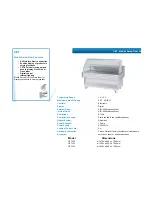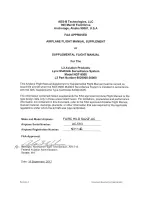
For example, assume we need 26 liters to get back to the previously marked fuel level. This
means the the fuel level should have been at 24 liters as we started with a value of 40 liters.
This example would mean that our fuel flow sender is under reading by four liters as it has not
measured the correct quantity of fuel.
Now start adjusting the K-Factor so your tank level changes from 28 liters to 24 liters. You would
adjust the K-factor down in this case (fewer pulses per liter of fuel).
Using this calibration method you can get to very accurate fuel flow readings. The initial accuracy
of fuel flow readings is dependant on the viscosity or type of fuel you use, added oils, installation
and finally the temperature of the fuel.
A good installation can achieve about a +/- 3% accuracy with as little as 1% error after calibration.
Alarm …
Enter your desired minimum fuel value that you would like to trigger the fuel low alarm. The fuel
low alarm will result in flashing of the fuel level display and remaining fuel readout. You can also
connect a warning lamp to the external alarm output (see installation diagram).
Note that the fuel low level will be displayed as a vertical line on your fuel level display. This level
is over and above your “silent” fuel reserve.
Each tank has its own alarm level.
Units …
Select your required units for distance and fuel quantity. The following options are available:
L/M: Liters and statute miles
G/M: U.S. Gallons and statute miles
L/Nm: Liters and nautical miles
G/Nm: U.S. Gallons and nautical miles
L/Km: Liters and kilometers
G/Km: U.S. Gallons and kilometers

















